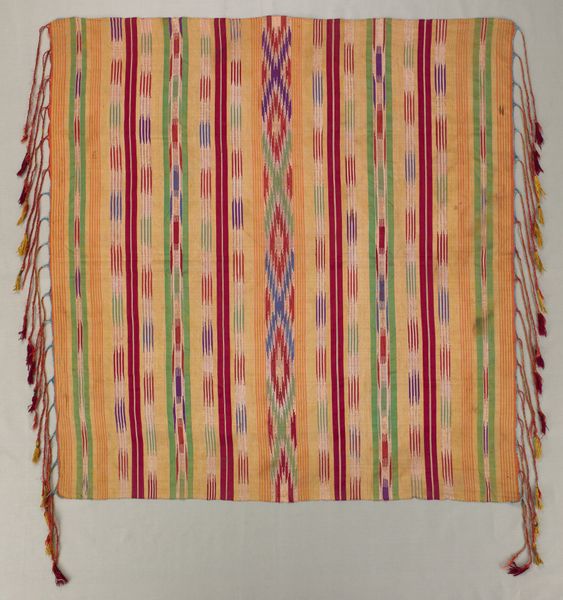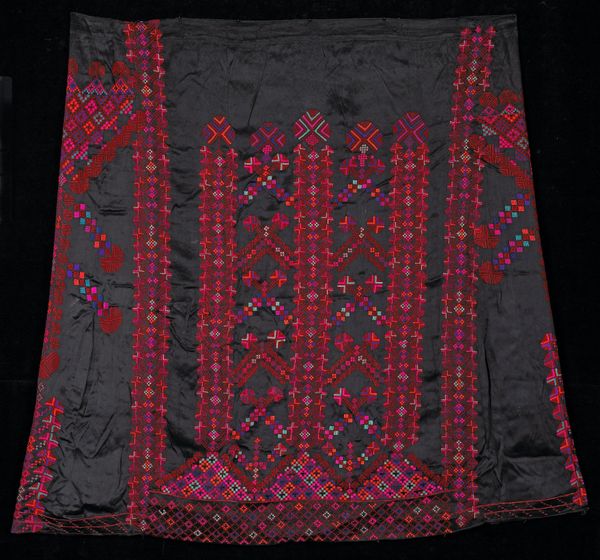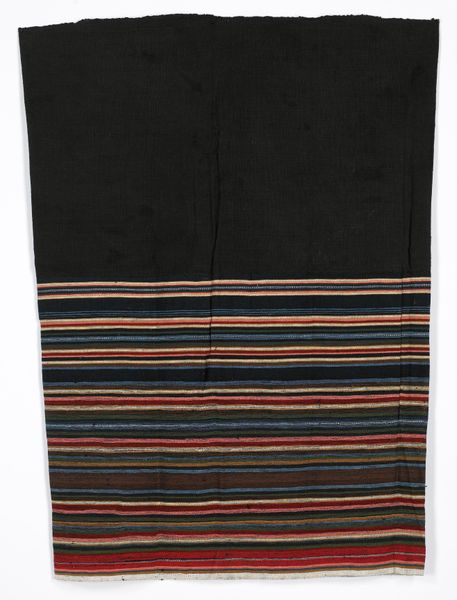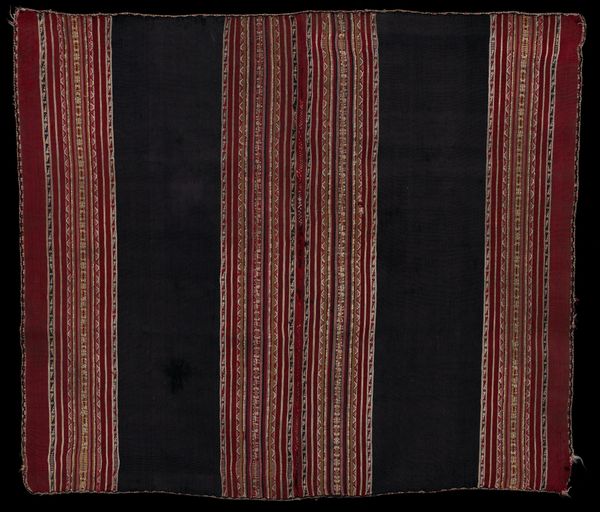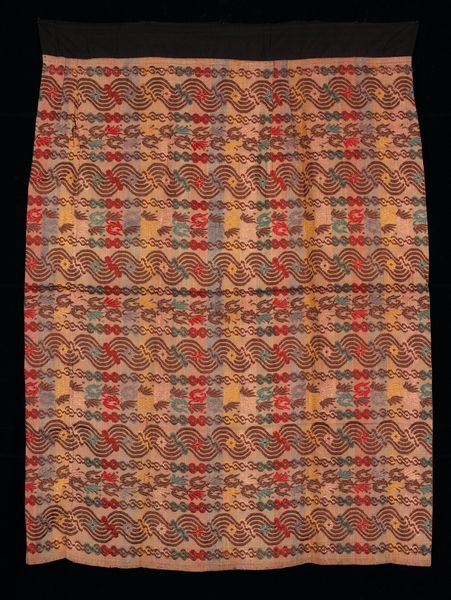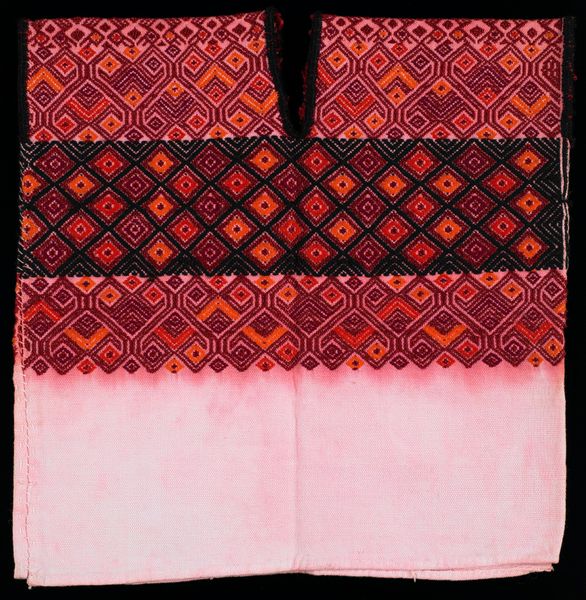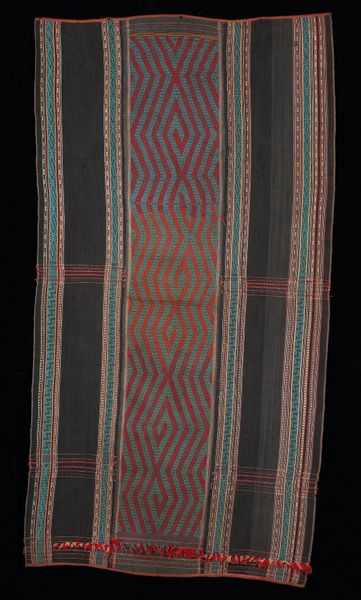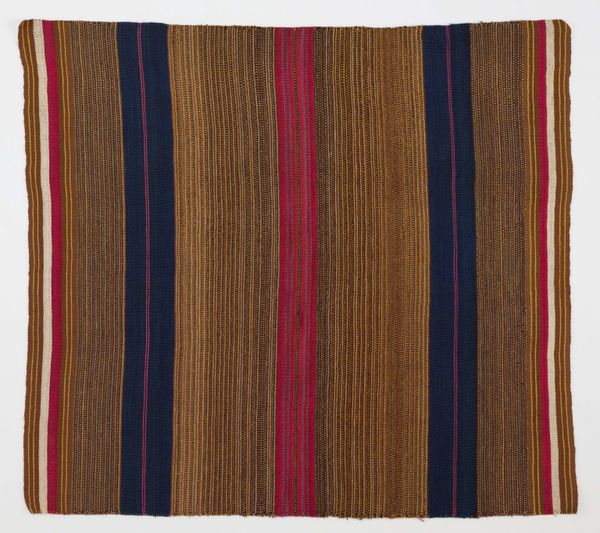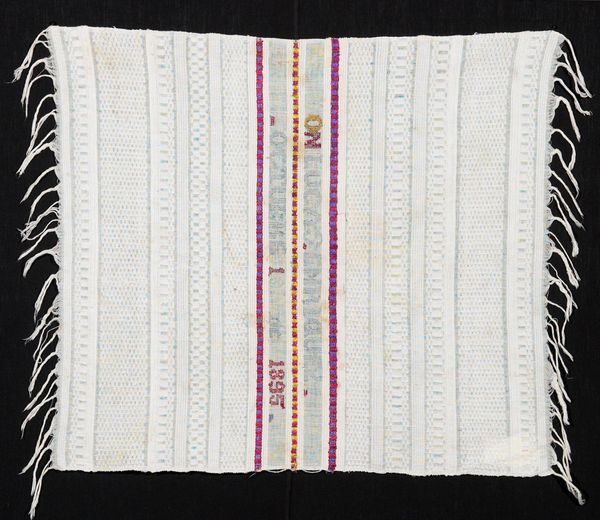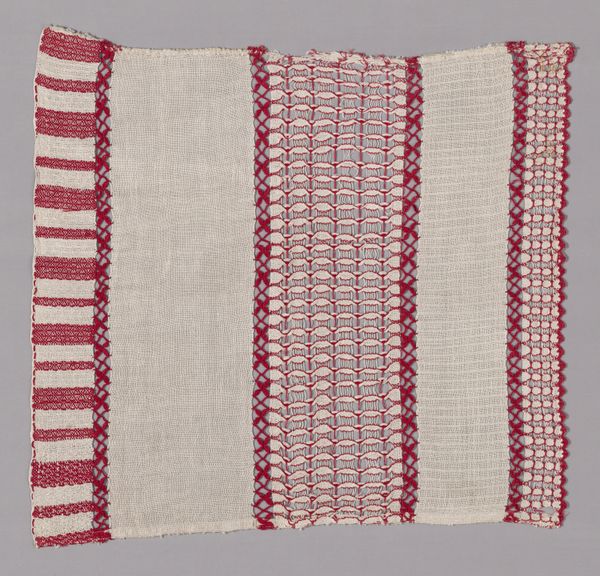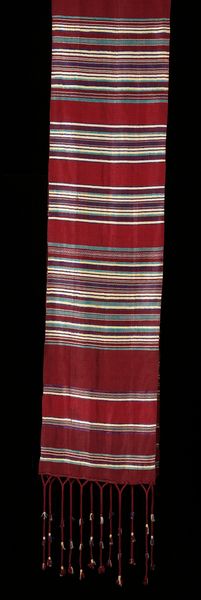
fibre-art, weaving, textile, cotton
#
fibre-art
#
asian-art
#
weaving
#
textile
#
geometric pattern
#
geometric
#
line
#
cotton
#
textile design
#
decorative-art
Dimensions: 34 x 31 1/2 in. (86.36 x 80.01 cm)
Copyright: Public Domain
Curator: Here we have a textile work entitled "Skirt," believed to originate around the 20th century, attributed to the Kachin people. This piece is currently held in the collection of the Minneapolis Institute of Art, woven from cotton. What are your first thoughts looking at it? Editor: It immediately strikes me as incredibly vibrant, despite the muted tones. The geometric patterns create a powerful visual rhythm—both comforting in its regularity and stimulating because it seems almost alive. Curator: Indeed. Considering the social context, garments such as this are not simply aesthetic objects; they serve as potent cultural markers. Each stripe, each diamond, carries symbolic meaning, perhaps representing lineage, status, or ritual roles within the Kachin community. We often see a confluence of Pattern and Decoration movement influence combined with aspects of traditional Asian art within textiles. Editor: And you can certainly see a careful use of design. It speaks to how the intimate sphere of domestic production, such as creating clothing, served as a powerful site for artistic expression. Imagine the skill, the time, and perhaps the collaborative effort that went into weaving a skirt like this. And if we examine this from another angle, its mere presence in a museum shifts the narrative of traditional clothing toward decor, transforming our understanding of Asian Art History through its mere inclusion and its position among the museum's diverse objects. Curator: Precisely! The movement of such objects into museum collections also influences identity formation. These skirts connect Kachin individuals to a broader cultural heritage, both for the artists involved in their creation, the person wearing them, and also for museum visitors seeking to understand different cultural symbol systems through their use of lines and geometry. Editor: This brings the whole question of ownership, of cultural heritage, of the way in which meaning shifts when these garments are displayed under glass rather than worn in a ritual or celebration back into view. We must always consider the full trajectory. Curator: A poignant reminder that our role, here in the gallery, should first and foremost serve the vital goal of understanding and cultural exchange. The very nature of such exchange necessitates such reflections. Editor: And that, in itself, requires careful interpretation!
Comments
No comments
Be the first to comment and join the conversation on the ultimate creative platform.

